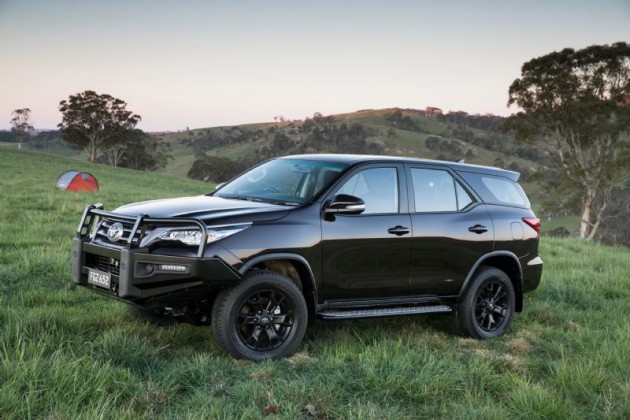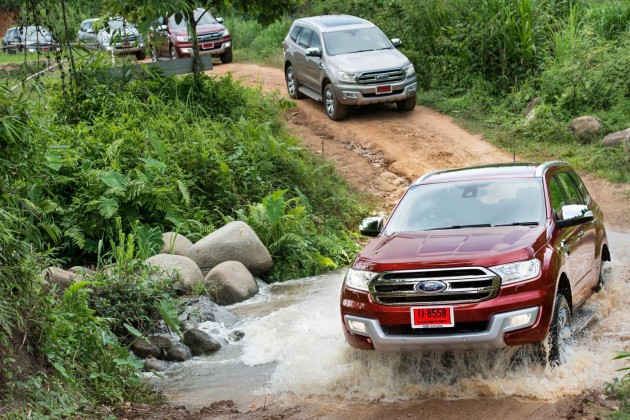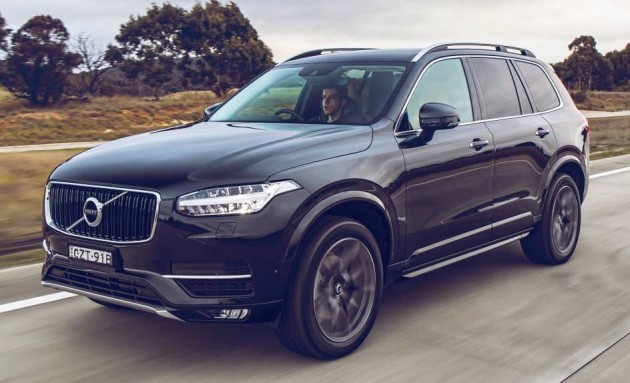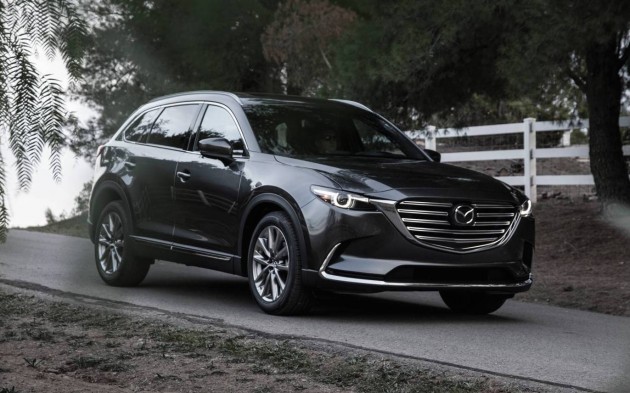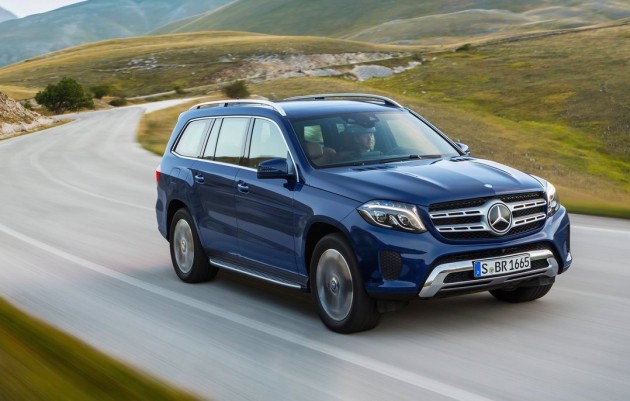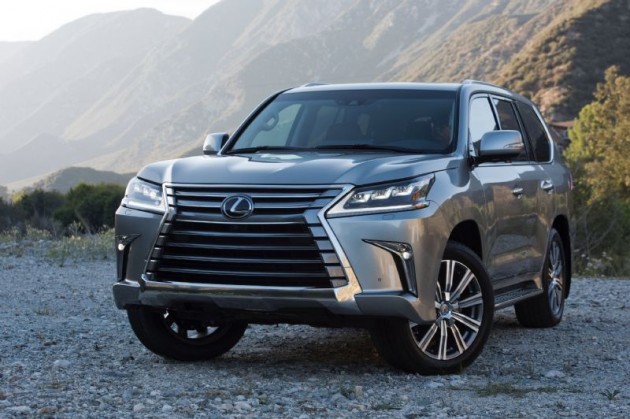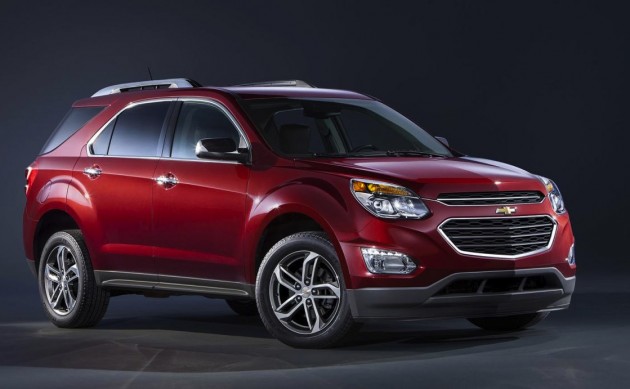So you’re an automotive enthusiast but you’ve got a penchant for spawning several rugrats, and it’s time to trawl through the list of suitable conveyances you’re now limited to. Over a decade ago, this was a sentence to drudgery in a penalty box MPV or rough-as-guts ladder-frame SUV.
Since the advent of the crossover (silhouette of SUV with underpinnings of a car), the choice and variety of options has increased exponentially. Sales of this type of vehicle continue to go from strength to strength, which is why nearly every auto manufacturer is clamouring to make sure they have this area covered.
The Honda Odyssey, Kia Carnival and Rondo7, Chrysler Voyager, Mercedes-Benz V-Class, and Toyota Tarago all represent the MPV camp, with the Proton Exora offering the cheapest entry into a seven-seater vehicle. While those cab-forward vehicles are practical and useful, seven-seater SUVs are increasingly becoming the default go-to car to fulfil this need.
We’ve already given you a run-down of SUVs coming before the end of the decade, and the top 10 best SUVs coming in the next year. But now let’s focus on the 7-seater side of the equation, with a mixture of the freshest and hottest recently available, and those destined for 2016 and beyond.
Haval H9
The tousle for most-popular seven-seat SUV in Australia has been fought in the last decade between two vehicles; the Ford Territory and Toyota Prado. Two different philosophical approaches, the former sitting on a car floorpan, while the latter a true, ladder-framed brute. The Prado continues to dominate, and new Chinese entrant Haval wants a slice of the action with the aesthetically similar H9 coming next year.
Having already launched the H8 this year after a slow start, the H9 and its little brother, the Mitsubishi ASX-sized H2, will greet Australian motorists in 2016. The H9 will compete price-wise for Prado, meaning a mid-$40,000 starting price is likely. Initially the only engine will be a 2.0-litre turbocharged four-cylinder but that will be joined by a market-essential 2.0-litre turbo-diesel, and a stonking 3.0-litre turbo V6 with 248kW and 485Nm a possibility. This would become the most powerful Chinese car sold in Australia to date.
Nevertheless, the Haval brand is one to watch in 2016, as it is perfecting a formula to fulfil its ambition of SUV sales domination.
Toyota Fortuner
Toyota’s array of seven-seater vehicles is intimidating to other manufacturers. In addition to the evergreen Tarago, LandCruiser 200 and well-loved Prado, there’s also the Kluger crossover and now the HiLux-based Fortuner wagon slotting in between the latter two. Starting at $47,990 and available in three grades, the Fortuner is available exclusively with HiLux and Prado’s 2.8-litre turbo-diesel engine, generating 130kW and 450Nm. As we discovered in the Prado, it is a smooth and refined drivetrain. Australian engineers had input in the development of the vehicle and calibrated many of the engine and suspension settings.
Ford Everest
Ford Australia was given a litmus test with the development of the T6 platform and the Ranger. The runaway success of its efforts has yielded many plaudits from within Ford and from customers. It has come very close to matching HiLux’s market domination at times, so it was only fitting that it should be given the task of developing an SUV derivative.
Not just a wagon body on the Ranger’s frame, mind you, Everest has been engineered into quite a different animal. The rear suspension is coil sprung, rather than the Ranger’s leaves, and Ford Australia’s chassis engineers have ensured the Everest is a fine-handling, well-mannered road car, as well as a capable off-roader. A 10-speaker sound-system, Ford Sync and many luxury features completely disguise the Everest’s commercial origins. With Territory production due to wrap up next year, the seven-seat Everest is being seen as the replacement. Australian Everests are sourced from Thailand, with the 3.2-litre turbo-diesel five-cylinder on all three grades. Prices range from $54,990 to $76,990 (excluding on-roads), and it is available now.
Tesla Model X
Tesla has been a runaway success and physically can’t build enough of its electric vehicles to satisfy worldwide demand. Tesla says when the Model X finally gets here, pricing will be competitive with the BMW X5, which starts at below $85,000. Tesla says on its Australian website the Model X should hit showrooms in late-2016.
However, as with the Model S, the X has been dogged with production delays. This could be chalked up to the sheer complexity of its up-swinging ‘Falcon-door’ system, considering it is to its Model S stablemate what an X5 is to a 5 Series. Nevertheless, combining SUV practicality and dramatic doors to the same game-changing formula as the Model S means this is one we’re very much looking forward to. Seven seats are available in the US, along with a six-seat option. It also has a bioweapon defense mode; an advanced filtration system to protect occupants, with safety promised to be better than any current SUV on sale.
Volvo XC90 T8
The all-new Volvo XC90 currently on sale, especially in hybrid T8 form (arriving a bit later this year), is destined to become one of the most sought-after contenders in the fierce premium seven-seat SUV battleground. Underpinned by Volvo’s new Scalable Platform Architecture (SPA), the XC90 is the first fruit of Chinese parent company Geely’s massive investment in the Scandinavian icon.
For evidence of Volvo’s push to battle BMW and Mercedes-Benz, you need only feast your eyes on one of the most breathtaking interiors for the segment. It features diamond-cut controls and a crystal gearknob on some models. Safety and practicality remain priorities, with seven seats and loads of cargo space, and a full suite of driver assistance technology in accordance with Volvo’s goal to have zero fatalities in its vehicles by the end of the decade.
Under the bonnet are Volvo’s new generation of Drive-E engines, featuring a new 236kW T6, and topping out at a plug-in hybrid T8 with around 300kW. The engines and platform are set to be utilised for the next-generation S60 and S90. The XC90 prices range from $89,950, to $122,950 for the T8 Twin Engine.
2016 Mazda CX-9
Arguably one of the most anticipated new seven-seat SUVs to arrive in the Australia, the new Mazda CX-9 is set to resolve quite a few customer demands from the outgoing model. It’s expected to be more fuel efficient compared with the thirsty V6 thanks to an all-new 2.5-litre turbo. The interior has also been vastly update to incorporate its latest technology and media interface, while the exterior has received a makeover so it conforms to the more modern and chic “Kodo” design language. Mazda is one of the most popular car brands in Australia so it will be interesting to see how the new CX-9 competes with the wave of newcomers.
Mercedes-Benz GLS
The gargantuan Mercedes GL-Class is the bigger brother of the ML-Class, offering more space and seven seats. Mercedes SUVs are undergoing a bit of a renaissance at the moment, with a nomenclature change to more closely match them to sedan counterparts. The GLK becomes the GLC, the M-Class the GLE, and the GL is now the GLS, also becoming the technological and luxury flagship of the three-pointed star’s SUV lineup. Revealed to the public at this month’s LA Auto Show, the GLS features a nine-speed automatic, as well as Mercedes’s new twin-turbo V6 drivetrains. The GLS will have to square off against Audi’s new, lighter Q7 and BMW’s X7 that is expected around 2018. Final pricing and on-sale dates for the GLS are yet to be announced, but it is set to arrive in Australia in 2016.
Lexus LX 570
Lexus has recently launched a heavily facelifted version of the LX 570, featuring a new eight-speed automatic transmission. Further removed from the LandCruiser 200 donor car, the 2016 LX 570 features a far more sumptuous interior and styling elements in line with the rest of the Lexus range.
Starting at $140,500 ($5800 more than last year’s model), the LX 570 now offers more choice for drive modes, larger screens in the dashboard and for rear passengers and a head-up display among many other new innovations.
The LX 570 rivals the Infiniti QX80 as well as the Nissan Patrol. A seven-seat version of the freshly-launched RX crossover is expected to be revealed next year, but local executives have so far poured cold water on the idea of it coming here.
Land Rover Discovery 5
Land Rover’s ubiquitous Discovery has been split into several models. The traditional Discovery model is expected to be revealed soon, as the Discovery Sport fulfils the role once played by the Freelander. The new Discovery will tackle traditional rivals from BMW and Audi, and feature theatre seating accommodation and the traditional window treatment, albeit with modern styling flourishes seen on the rest of the range.
The SUV is expected to be a lot lighter in weight and showcase a sleeker design inspired by the Discovery Vision concept (pictured). A host of new technologies are likely as well, potentially including an under-floor camera that gives occupants a view of what’s on the ground in front, as previewed on an earlier concept. We may also get remote driving and laser headlight technology. Likely to be revealed in 2016, the new Discovery should feature the latest Jaguar Land Rover “Ingenium” family of engines, which is rumoured to include an inline-six for the first time so far.
Holden… something
As Holden repositions itself as an import-only brand, it has promised a slew of 27 new models between now and the end of the decade. Leveraging resources from all over the GM world (Asia, Europe, US), one of the more interesting promises is a new SUV flagship in 2018. Holden is also set to introduce a much-needed replacement for the Captiva, which has now been on sale in Australia in virtually the same form since 2006.
A seven-seater is a very likely possibility. GM has sold three large crossovers on the Lambda platform since 2006; the Chevrolet Traverse, Buick Enclave and GMC Acadia. The expected Opel-sourced SUV may be spun off the replacement platform for these vehicles. A new seven-seater, to replace the Captiva 7, could also come in the form of a rebadged version of the Chevrolet Equinox. In any case, the vehicle will be a technological flagship for Holden as well as a signal of paradigm shift for the Aussie marque.

